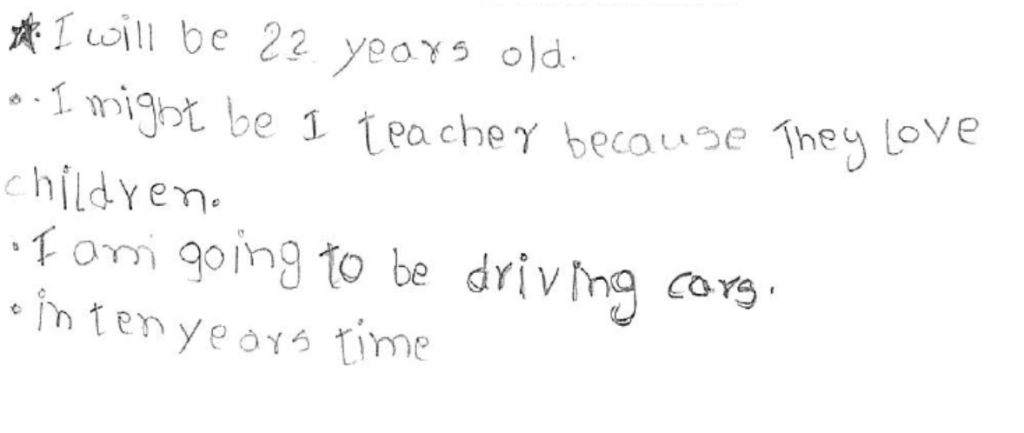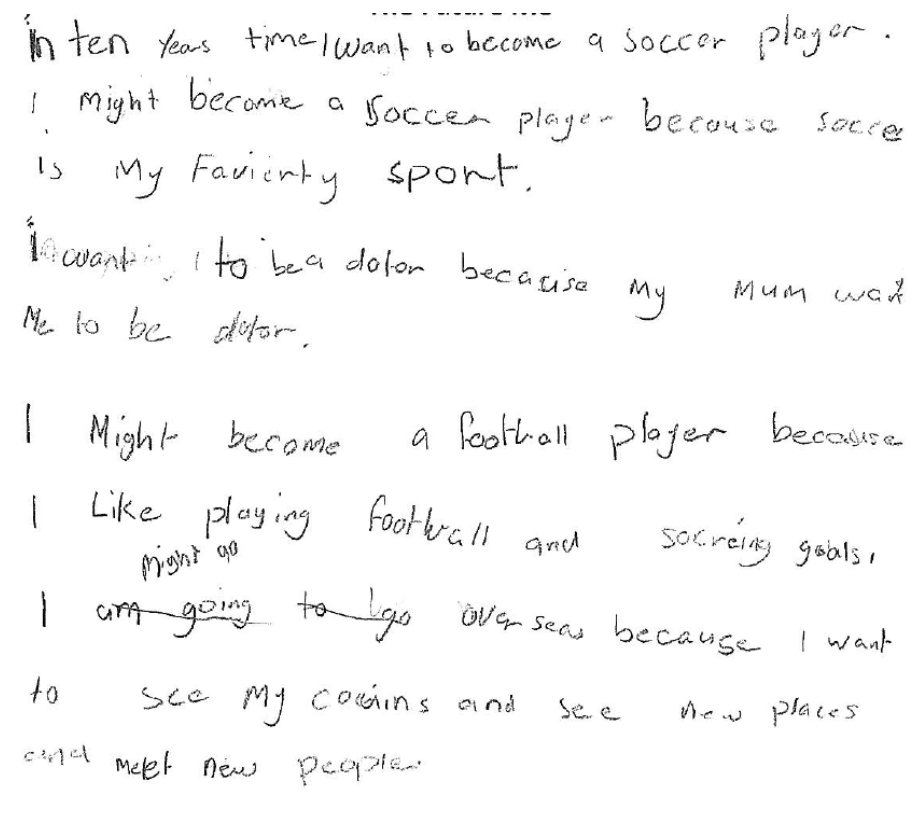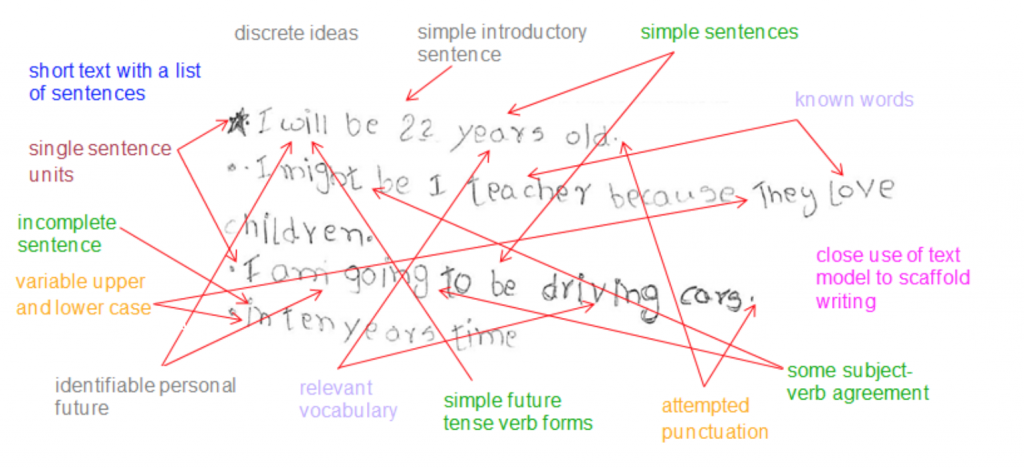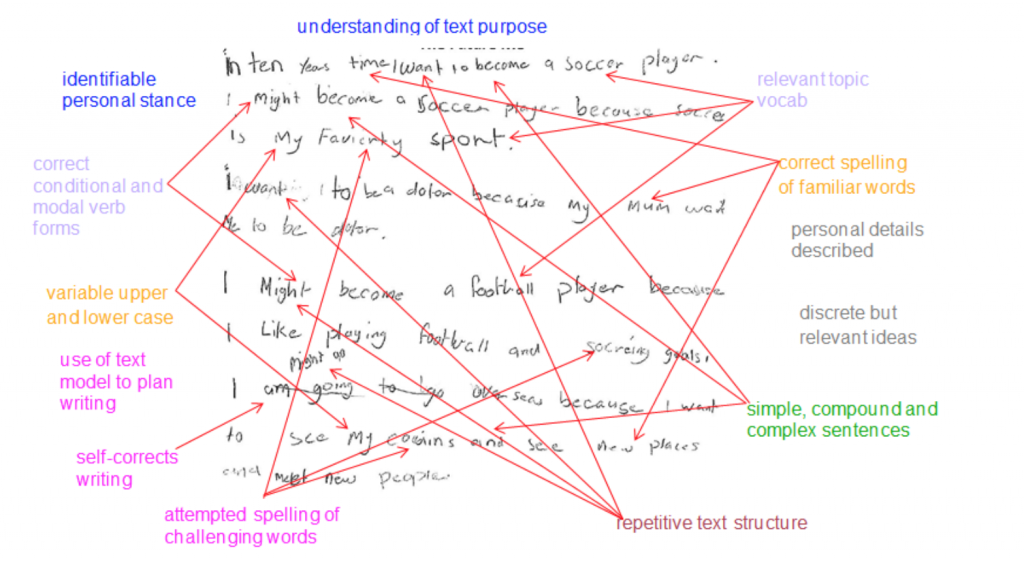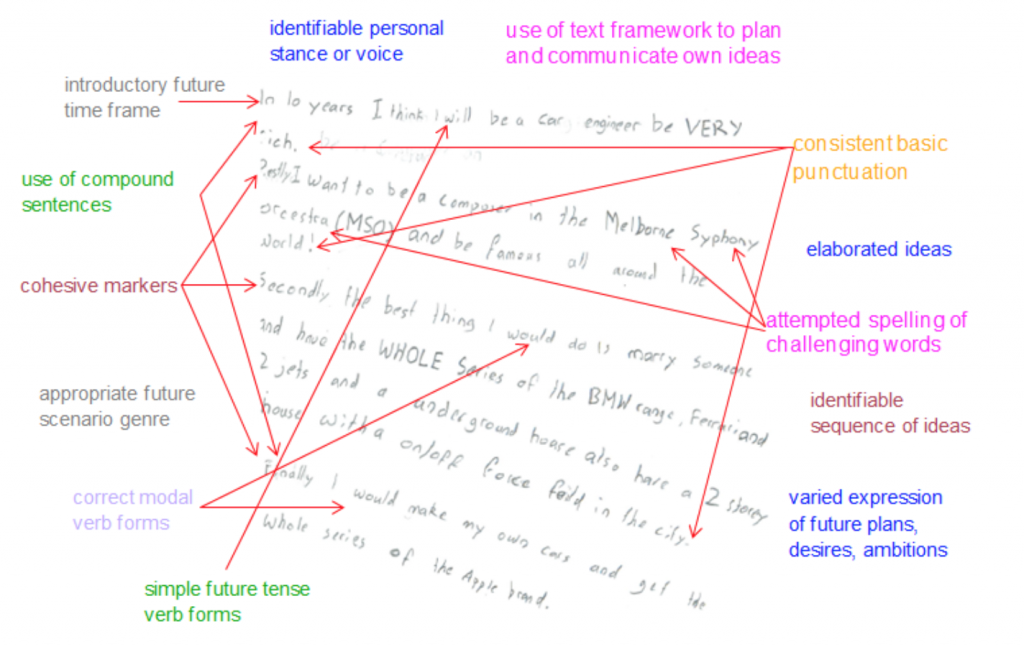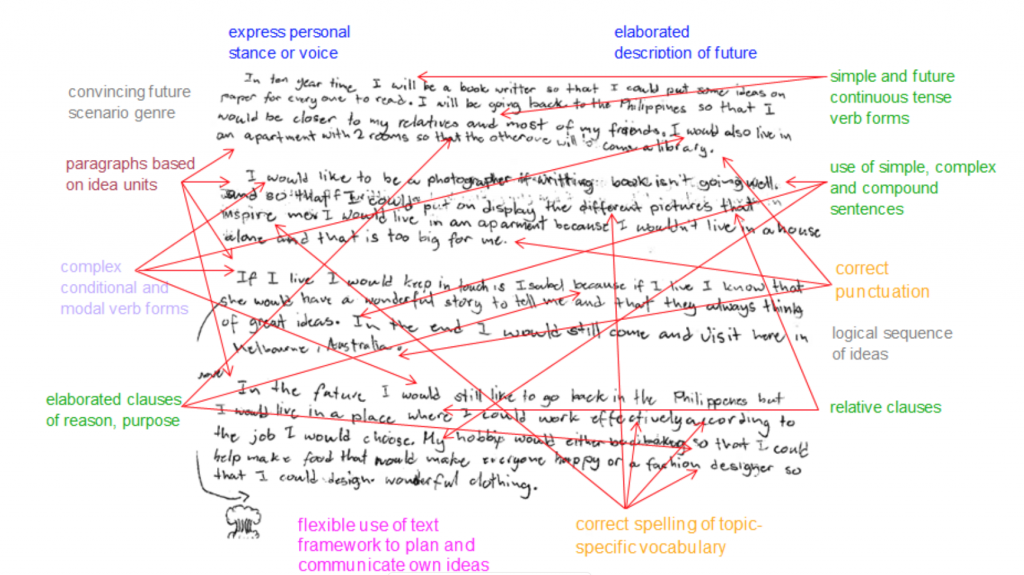10. The future me
Please click on the toggles below to navigate through information on this assessment task and reveal the links for downloading task materials.
Task details |
|
| Name of writing assessment task | The future me |
| EAL curriculum level range | B2, B3, C2, C3 |
| Text orientation | Imaginative |
| Task type | Extended response |
Task specification |
|
| Purpose | To assess students’ ability to write about what they would like to be or do when they grow up (personal ambitions). |
| Description | Students write about their future ambitions. |
| Assumed knowledge and description |
|
Learning/teaching context |
|
| Language centre/mainstream class | Small group |
| Subject/key curriculum level objectives, outcomes | English |
| Topic/teaching unit | What would you like to be when you grow up? |
| Assessment conditions |
|
| Notes |
|
Task implementation |
|
| STAGE | ACTION STEPS |
| Pre-assessment activity |
|
| Assessment activity |
|
| Post-assessment activity |
|
Click to view the criteria for this assessment:
- TEAL Writing Task 10 – unmarked criteria sheet [PDF]
- TEAL Writing Task 10 – unmarked criteria sheet [Word]
An explanation of the purpose, nature and use of criteria sheets is available at 4. Using the assessment criteria.
Year level: 5
Commentary
The student shows an understanding of the task and an ability to write about future imaginary activities, relying on teacher support and modelled text to accomplish the task.
The text shows that the student is able to express simple ideas but is not able to organise and write an extended or reflecting a coherent text structure. The text is closely structured using separate dot-point sentence cues or models.
The student uses simple future and future continuous tenses based on sentence models.
The student is able to form most letters correctly using appropriate upper and lower case.
The marked criteria sheet shows that the student meets criteria at level 1 of performance.
The student’s language use in this task is consistent with the descriptions of students at Level B2, Victorian Curriculum F-10 EAL.
TEAL Writing Task 10 – criteria sheet – Sample 1
Using this assessment for further learning
(Select the points you think are currently of most importance to the student.)
The sample draws attention to the student’s need to develop language for structuring coherent, unified texts, in particular, through use of cohesive linking words. It also highlights the student’s sensitivity to and ability to learn from modelled texts.
This language can be modelled and developed by getting the student to complete an elaborated cloze text based on the student’s own sample which targets cohesive linking words such as time phrases and personal pronoun references. This process could then be repeated with reduced degrees of modelled support.
Year level: 7
Commentary
The sample shows an understanding of the task and an ability to imagine future activities using relevant simple vocabulary.
The text shows that the student is able to express ideas and organise them within a coherent text structure. The text is structured through use of repetitive sentence patterns, ‘I want’, ‘I like’ plus reason clauses.
The student uses both simple and complex sentences.
The student uses simple future and present tenses and modals appropriately and is able to self-correct use of modals.
The student uses variable punctuation and upper and lower case.
The student uses and builds on model text to accomplish the task.
The marked criteria sheet shows that the student meets criteria at level 2 and 3 of performance.
TEAL Writing Task 10 – criteria sheet – Sample 2
The student’s language use in this task is consistent with the descriptions of students at Level C2, Victorian Curriculum F-10 EAL .
Using this assessment for further learning
(Select the points you think are currently of most importance to the student.)
The sample shows the student’s ability to learn from modelled texts and his progress in constructing compound and complex sentences as part of a simple cohesive text. It highlights the student’s need to consolidate and develop a wider repertoire of compound and complex sentences using clauses of reason, contrast, concession etc. while creating a coherent, unified text.
Such sentence construction can be developed by getting the student to complete a series of macro-cloze sentences related to the student’s own sample which scaffolds sentence beginnings and coordinating conjunctions while allowing the student freedom to complete complex sentences according to intended meanings of the text.
Year level: 7
Commentary
The sample shows an understanding of the task and an ability to imagine and describe their future self by projecting their personal interests, hopes and ambitions using interesting personal details.
The text shows that the student is able to express and organise their ideas in paragraph units to make a coherent text. The text and paragraph units are structured through use of cohesive markers, ‘firstly’, ‘secondly’, ‘finally’.
The student uses simple and compound sentences appropriately.
The student uses simple future and present tenses and modals appropriately.
The student uses consistent punctuation and upper and lower case.
The student uses the model text as a stimulus for their grammatical repertoire to accomplish the task.
The marked criteria sheet shows that the student meets most criteria at level 3 of performance.
The student’s language use in this task is consistent with the descriptions of students at Level C2, Victorian Curriculum F-10 EAL.
TEAL Writing Task 10 – criteria sheet – Sample 3
Using this assessment for further learning
(Select the points you think are currently of most importance to the student.)
The sample shows the student’s ability to use a stimulus text to communicate own ideas and organise these ideas in paragraph units to make a coherent text.
Reliance on use of simple and compound sentences highlights the student’s need to develop a wider repertoire of complex sentences using clauses of reason, contrast, concession etc. while creating a coherent, unified text.
Such sentence construction can be developed by getting the student to complete a series of macro-cloze sentences related to the student’s own sample which scaffolds sentence beginnings and coordinating conjunctions while allowing the student freedom to complete complex sentences according to intended meanings of the text.
Commentary
The sample shows an understanding of the task and an ability to imagine and convincingly describe their future self by projecting their personal interests, hopes and ambitions using interesting personal details.
The text shows that the student is able to express and organise their ideas in paragraph units to make a coherent and logical text. Paragraph units and overall text structure are organised around discrete future scenario ideas or themes. The revised ordering of the last two paragraphs shows an awareness of overall text cohesion and a need for of text closure.
The student skilfully uses a range of simple, compound and complex sentences with an emphasis on elaborated clauses of reason and purpose/intention.
The student skilfully uses simple and continuous future tenses with high degrees of modality.
The student is uses the model text as a stimulus for original personal expression and communication of their possible future.
The marked criteria sheet shows that the student meets most criteria at level 4 of performance.
The student’s language use in this task is consistent with the descriptions of students at Level C3, Victorian Curriculum F-10 EAL.
TEAL Writing Task 10 – criteria sheet – Sample 4
Using this assessment for further learning
(Select the points you think are currently of most importance to the student.)
The sample shows the student’s ability to use a stimulus text for personal expression and organise ideas in thematic paragraph units to make a coherent text.
The competence and sophistication of the student’s writing at both text and sentence levels suggest that the student’s needs lie in the area of consolidating and extending their personal voice in writing.
Voice could be developed by providing the student further opportunities for personal writing using authentic personal texts as stimulus models for their own writing or setting similar writing tasks with key word/concept stimuli.

